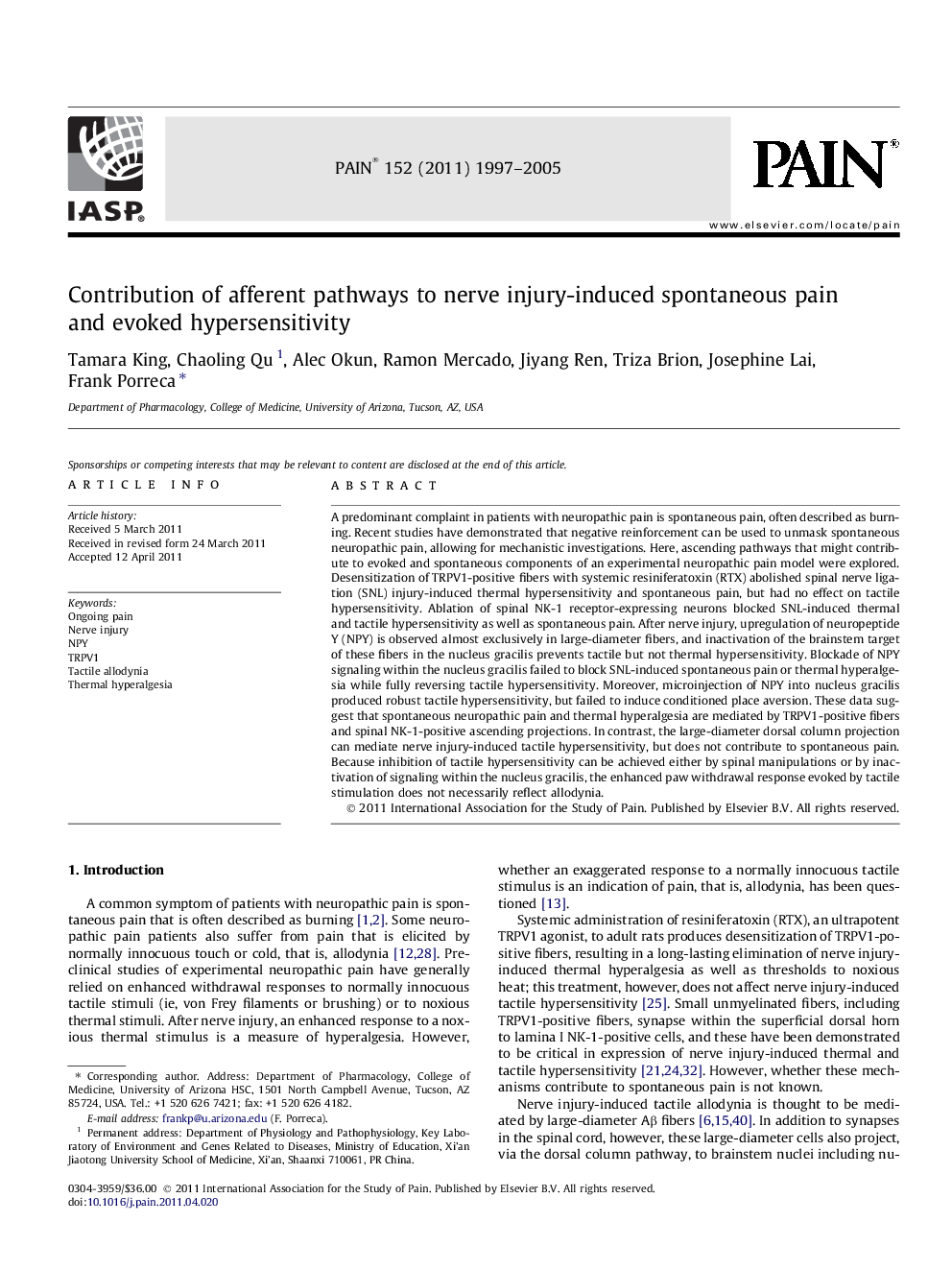| کد مقاله | کد نشریه | سال انتشار | مقاله انگلیسی | نسخه تمام متن |
|---|---|---|---|---|
| 914093 | 918383 | 2005 | 9 صفحه PDF | دانلود رایگان |
عنوان انگلیسی مقاله ISI
Contribution of afferent pathways to nerve injury-induced spontaneous pain and evoked hypersensitivity
دانلود مقاله + سفارش ترجمه
دانلود مقاله ISI انگلیسی
رایگان برای ایرانیان
کلمات کلیدی
موضوعات مرتبط
علوم زیستی و بیوفناوری
علم عصب شناسی
علوم اعصاب سلولی و مولکولی
پیش نمایش صفحه اول مقاله

چکیده انگلیسی
A predominant complaint in patients with neuropathic pain is spontaneous pain, often described as burning. Recent studies have demonstrated that negative reinforcement can be used to unmask spontaneous neuropathic pain, allowing for mechanistic investigations. Here, ascending pathways that might contribute to evoked and spontaneous components of an experimental neuropathic pain model were explored. Desensitization of TRPV1-positive fibers with systemic resiniferatoxin (RTX) abolished spinal nerve ligation (SNL) injury-induced thermal hypersensitivity and spontaneous pain, but had no effect on tactile hypersensitivity. Ablation of spinal NK-1 receptor-expressing neurons blocked SNL-induced thermal and tactile hypersensitivity as well as spontaneous pain. After nerve injury, upregulation of neuropeptide Y (NPY) is observed almost exclusively in large-diameter fibers, and inactivation of the brainstem target of these fibers in the nucleus gracilis prevents tactile but not thermal hypersensitivity. Blockade of NPY signaling within the nucleus gracilis failed to block SNL-induced spontaneous pain or thermal hyperalgesia while fully reversing tactile hypersensitivity. Moreover, microinjection of NPY into nucleus gracilis produced robust tactile hypersensitivity, but failed to induce conditioned place aversion. These data suggest that spontaneous neuropathic pain and thermal hyperalgesia are mediated by TRPV1-positive fibers and spinal NK-1-positive ascending projections. In contrast, the large-diameter dorsal column projection can mediate nerve injury-induced tactile hypersensitivity, but does not contribute to spontaneous pain. Because inhibition of tactile hypersensitivity can be achieved either by spinal manipulations or by inactivation of signaling within the nucleus gracilis, the enhanced paw withdrawal response evoked by tactile stimulation does not necessarily reflect allodynia.
ناشر
Database: Elsevier - ScienceDirect (ساینس دایرکت)
Journal: PAIN - Volume 152, Issue 9, September 2011, Pages 1997-2005
Journal: PAIN - Volume 152, Issue 9, September 2011, Pages 1997-2005
نویسندگان
Tamara King, Chaoling Qu, Alec Okun, Ramon Mercado, Jiyang Ren, Triza Brion, Josephine Lai, Frank Porreca,